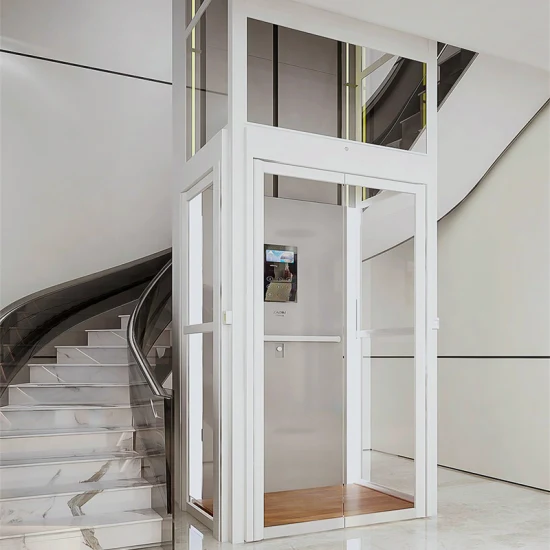London Lift Company: Relied On Professionals for All Your Upright Transport Requirements
London Lift Company: Relied On Professionals for All Your Upright Transport Requirements
Blog Article
Exploring the World of Lifts: Common Concerns Faced by Numerous Lift Systems
As we browse with the vertical transportation systems of modern buildings, elevators stand out as a crucial element of our day-to-day lives. From hydraulic lifts to grip systems and machine-room-less layouts, each lift kind comes with its collection of usual issues.
Hydraulic Elevators
Hydraulic lifts, usually preferred for low-rise buildings, make use of fluid stress to regulate the movement of the lift cars and truck (lift repair companies). This system involves a hydraulic pump pressing oil right into a cyndrical tube, creating the elevator to relocate in the preferred direction. While hydraulic elevators are understood for their smooth and quiet operation, they do include their very own collection of common concerns
One widespread trouble with hydraulic lifts is oil leak. Furthermore, problems with the control system, such as defective valves or a malfunctioning pump, can cause disturbances in the lift's motion.
Regular upkeep and punctual repair services are vital to make certain the smooth functioning of hydraulic lifts. By attending to these typical problems proactively, building proprietors can lessen downtime and guarantee the safety and performance of their upright transportation system.
Traction Lifts
When thinking about vertical transport systems in structures, one more common type in addition to hydraulic lifts is the grip elevator. Traction elevators operate using a system of ropes and weights that relocate the elevator vehicle by gripping onto the hoist ropes. This system permits smoother and much faster vertical transport compared to hydraulic systems.
Among the common concerns dealt with by grip elevators is rope wear. The consistent motion of the ropes within the grip system can result in tear and use over time, potentially creating the elevator to breakdown or end up being dangerous for use. Normal assessments and upkeep of the ropes are necessary to ensure the lift's appropriate functioning and safety and security.
Another problem that grip lifts may come across is related to the control system. Issues with the control system can cause issues such as unpredictable motion, hold-ups in response times, or perhaps full closures. Regular testing and maintenance of the control system are critical to avoid such problems and make certain the lift's reliability.
Machine-Room-Less (MRL) Elevators

Among the crucial components of MRL lifts is the small gearless grip equipment that is set up within the hoistway. This equipment effectively drives the elevator auto without the requirement for bulky tools discovered in conventional traction lifts. Additionally, MRL elevators typically utilize a counterweight system to balance the auto, further improving their energy efficiency.
In spite of their benefits, MRL elevators may deal with obstacles related to repair and maintenance as a result of the confined space for devices installment. Ease of access for servicing elements within the shaft can be limited, needing specialized training for technicians. Proper maintenance routines and routine examinations are essential to guarantee the continued smooth procedure of MRL lifts.
Overloading and Weight Restriction Issues
Are lifts equipped to deal with excess weight tons successfully and securely? Overloading and weight limit issues are essential concerns in elevator operations. Lift suppliers layout raises with details weight abilities to make certain guest safety and security and tools durability. Surpassing these weight limitations can result in various problems, including mechanical failings, hold-ups, and security dangers.
When lifts are overwhelmed, it have a peek at this site places extreme stress on the electric motor, cords, and other components, possibly creating break downs or malfunctions. Safety and security mechanisms such as sensing units and overload sensors are in place to avoid elevators from moving if they identify excess weight. Additionally, exceeding weight restrictions can cause enhanced energy intake and deterioration on the elevator system.
To mitigate straining problems, building supervisors must prominently show weight limitations in elevators and enlighten residents on the relevance of sticking to these constraints - lift repair companies. Normal maintenance checks by certified technicians can additionally assist make certain that lifts are running within safe weight specifications. By addressing overloading and weight limitation concerns proactively, building owners can improve lift safety and security and effectiveness
Electric System Failings
Exceeding weight limitations in lifts can not just lead to mechanical problems yet also potentially add to electric system failures within the lift facilities. Electric system failings are a crucial problem in elevator operation, as they can create unexpected shutdowns, malfunctions, or also security hazards. One typical electric concern is the overheating of parts due to too much existing circulation triggered by straining the lift past its capacity. This can lead to damage to the control, electric motor, or electrical wiring systems, leading to expensive repair services and downtime.
Furthermore, power surges or changes in the electrical supply can also interrupt the elevator's operation, affecting its efficiency and safety and security. These electric disturbances can damage sensitive elevator parts such as control board, motherboard, or sensing units, causing system failures. Regular upkeep and examinations are vital to determine and address possible electric concerns without delay, ensuring the safe and reliable operation of lift systems. By adhering to weight limits and performing routine electrical system checks, structure proprietors can reduce the risk of electric failures in elevators.
Final Thought

Hydraulic elevators, commonly chosen for low-rise structures, utilize fluid stress to control the motion of the elevator cars and truck.When considering upright transportation systems in structures, another typical kind aside from hydraulic lifts is the grip elevator. Grip lifts operate utilizing a system of ropes and weights that move the lift car by clutching onto the hoist ropes. Unlike traditional lifts that require a see this site separate machine space to house the equipment, MRL elevators incorporate most of the parts within the shaft, getting rid of the demand for a specialized Bonuses machine area.In final thought, lifts encounter common concerns such as hydraulic malfunctions, grip system failures, and electric system problems.
Report this page